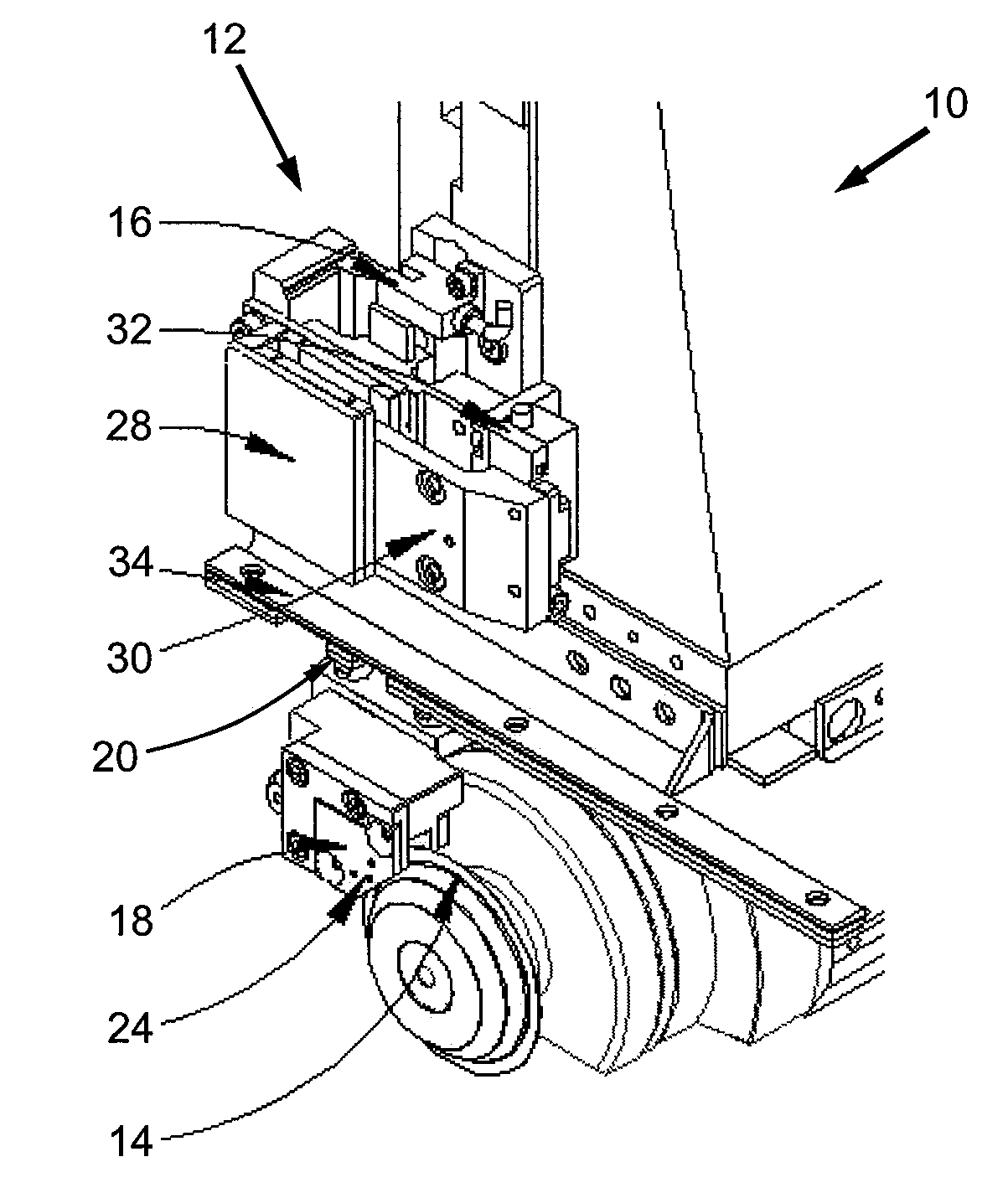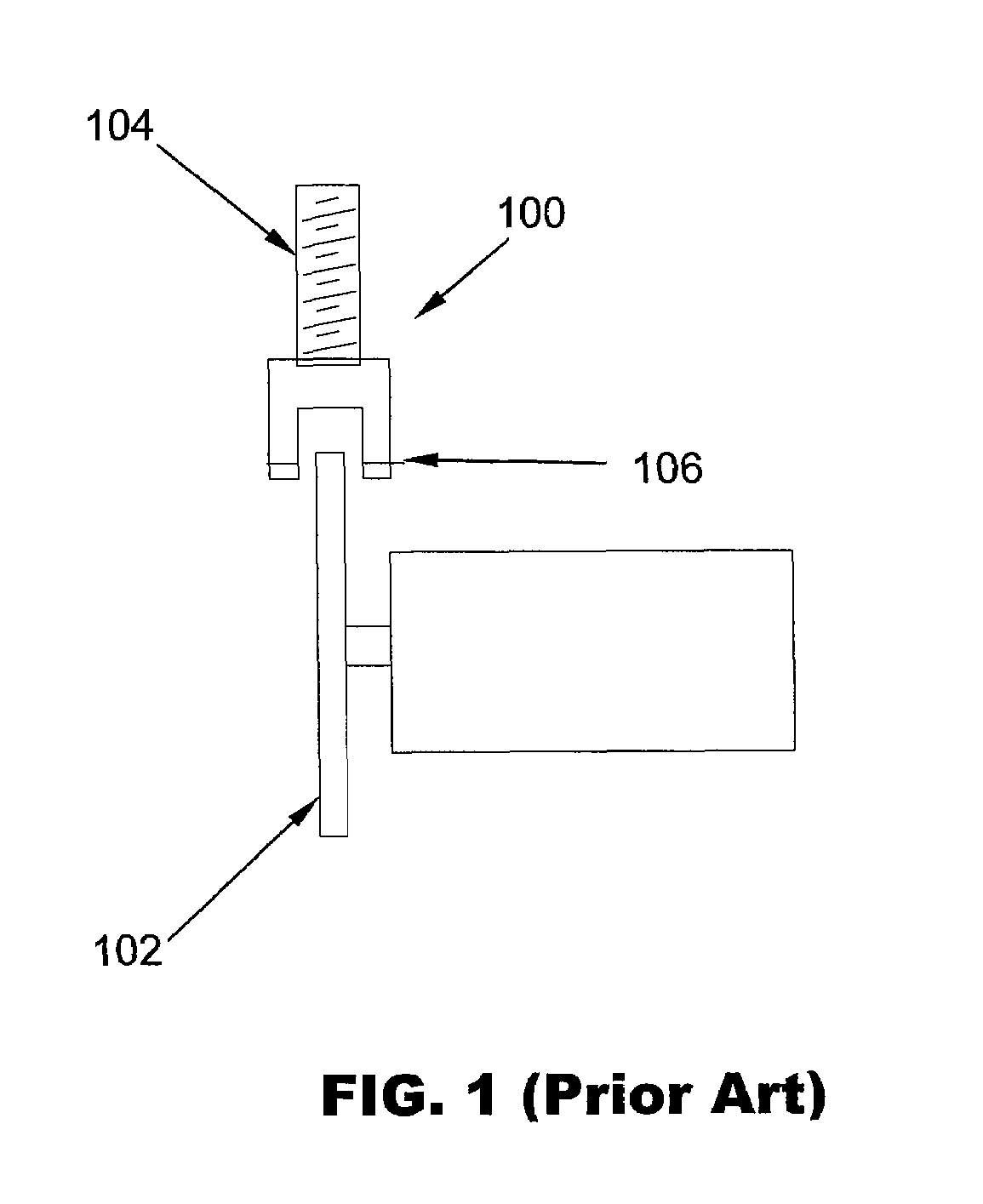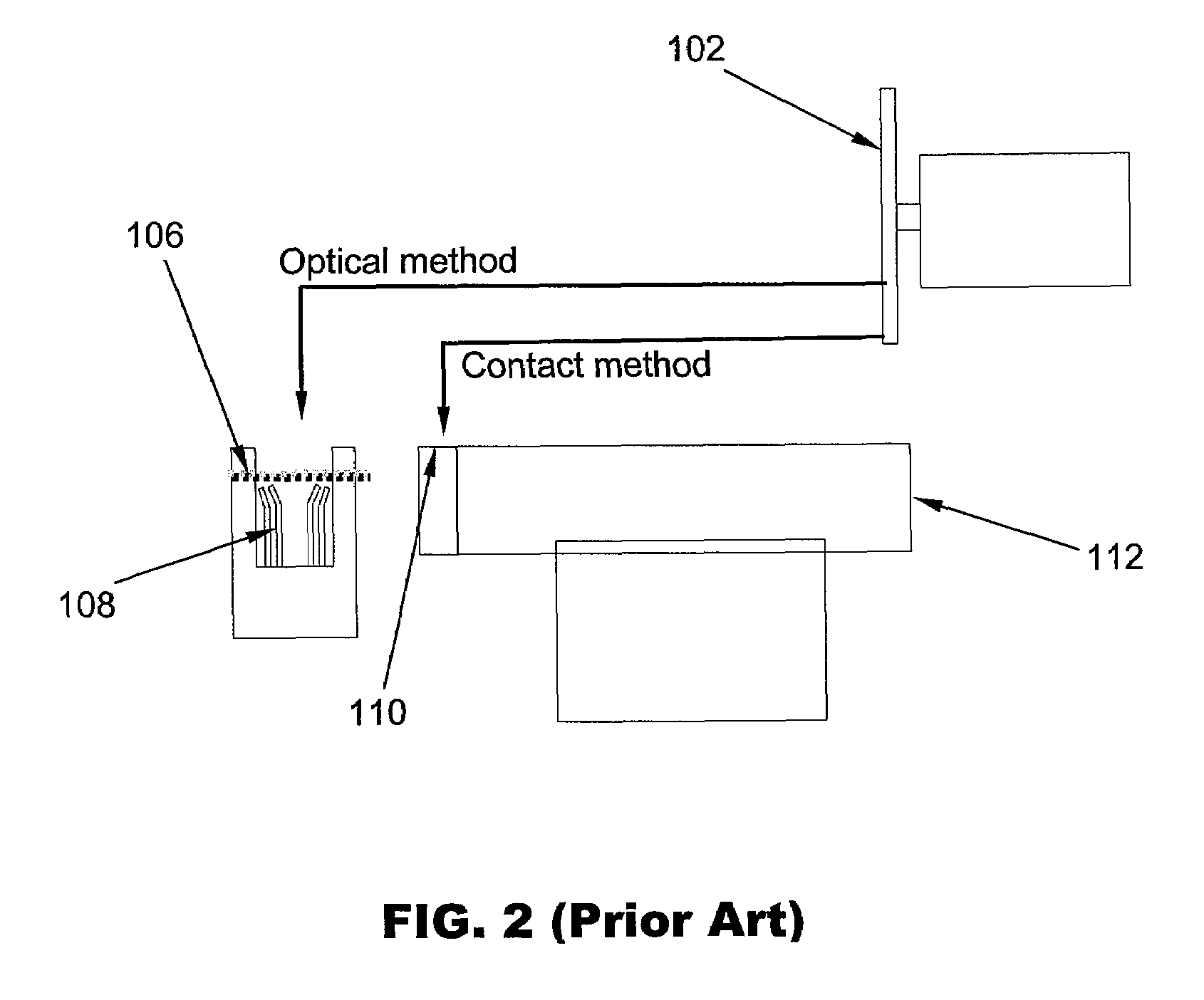Damage and wear detection for rotary cutting blades
a rotary cutting blade and wear detection technology, which is applied in the field of single-chip systems, can solve the problems of reducing the diameter of the blade, slow contact and optical methods of measuring the extent of wear of the blade as described above, and inhibiting normal machine operation, so as to reduce the travel time of the sensor and detect blade damage and wear more efficiently
- Summary
- Abstract
- Description
- Claims
- Application Information
AI Technical Summary
Benefits of technology
Problems solved by technology
Method used
Image
Examples
Embodiment Construction
[0025]The preferred embodiment of the present invention will be described hereinafter with reference to the accompanying drawings.
[0026]FIG. 3 is an isometric view of a singulation system 10 for singulating substrates incorporating a blade detection system 12 according to the preferred embodiment of the invention. The blade detection system 12 is located immediately above a rotary saw blade 14. This system 12 further comprises a home sensor 16, a sensor housed in a sensor housing 18, cylindrical guide rods 20, movable coils and other connecting parts. A through beam sensor is located within the sensor head 24 and enclosed in the sensor housing 18.
[0027]The sensor housing 18 may be driven by a linear direct drive motor mechanism comprising a linear motor 28 and a movable assembly 30 and indexed up and down using the guide rods 20 and a bearing 26. The sensor housing 18 is connected to the direct drive motor mechanism via the cylindrical guide rods 20 so as to drive the sensor housing...
PUM
| Property | Measurement | Unit |
|---|---|---|
| diameter | aaaaa | aaaaa |
| distance | aaaaa | aaaaa |
| speed | aaaaa | aaaaa |
Abstract
Description
Claims
Application Information
 Login to View More
Login to View More - R&D
- Intellectual Property
- Life Sciences
- Materials
- Tech Scout
- Unparalleled Data Quality
- Higher Quality Content
- 60% Fewer Hallucinations
Browse by: Latest US Patents, China's latest patents, Technical Efficacy Thesaurus, Application Domain, Technology Topic, Popular Technical Reports.
© 2025 PatSnap. All rights reserved.Legal|Privacy policy|Modern Slavery Act Transparency Statement|Sitemap|About US| Contact US: help@patsnap.com



